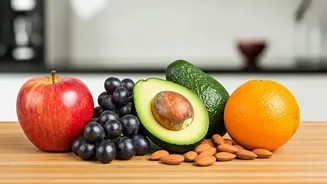Arancini: Rice Balls
Arancini, which translates to 'little oranges,' are a quintessential Sicilian street food. These deep-fried rice balls are typically filled with ragu (meat
sauce), mozzarella, and peas, offering a satisfying combination of textures and flavors. The rice is first cooked into a creamy risotto, then formed into balls, coated in breadcrumbs, and finally fried until golden and crispy. Different regions of Italy have their unique variations, with fillings ranging from ham and cheese to spinach and mushrooms, making each bite a new discovery. Arancini is not just a snack; it's a testament to the Italian tradition of transforming simple ingredients into culinary masterpieces.
Pizza: Classic Comfort
No Italian snack list would be complete without pizza. Originating in Naples, pizza has evolved into a global phenomenon, but its heart remains firmly rooted in Italy. The classic Neapolitan pizza boasts a thin, crispy crust, simple toppings like fresh tomatoes, mozzarella, basil, and a drizzle of olive oil. The secret to its flavor lies in the high-quality ingredients and the wood-fired oven, which imparts a smoky char. From the straightforward Margherita to more elaborate creations, pizza is a versatile dish enjoyed across Italy and adapted to local tastes. Whether eaten on the go or savored in a trattoria, pizza embodies the joy of Italian food.
Panini: Grilled Delight
Panini, or grilled sandwiches, represent the Italian love for simple, flavorful combinations. These sandwiches are made with various types of bread, often ciabatta or focaccia, filled with an array of ingredients like cured meats, cheeses, vegetables, and condiments. The bread is typically grilled until it’s crispy on the outside and warm and melty inside, perfectly melding the flavors. Popular fillings include prosciutto and mozzarella, salami and provolone, or vegetarian options like grilled vegetables and pesto. Panini is a convenient and satisfying snack that showcases the quality of Italian ingredients and the art of combining them into a delicious bite.
Focaccia: Herb Bread
Focaccia, a flat oven-baked bread, is a staple in Italian cuisine, particularly in Liguria. This bread is characterized by its dimpled surface, which traps the olive oil and herbs, creating a moist and flavorful texture. The dough is typically flavored with olive oil, salt, and rosemary, though other herbs and toppings like olives or tomatoes can be added. Focaccia can be enjoyed on its own as a snack or used as a base for sandwiches. Its simplicity and versatility make it a perfect accompaniment to various Italian dishes, capturing the essence of Mediterranean flavors.
Suppli: Roman Rice Treats
Suppli, a Roman specialty, is similar to arancini but with its own distinct charm. These deep-fried rice croquettes are typically filled with a rich tomato sauce and mozzarella cheese, often with a hidden surprise of a mozzarella stick at the center. Once fried, the mozzarella melts and stretches when you bite into the suppli. This snack is a favorite in Rome and offers a delightful contrast of textures: crispy on the outside and creamy on the inside. Suppli represents the art of transforming simple ingredients into a comforting and satisfying treat.
Gelato: Sweet Cream
Gelato, the Italian version of ice cream, is a must-try snack for any visitor. Unlike traditional ice cream, gelato typically contains less fat and is denser, offering a more intense flavor. It's made with fresh ingredients, often seasonal fruits, and is churned slowly to incorporate less air. Gelato flavors range from classic favorites like chocolate and vanilla to more unique combinations like pistachio, hazelnut, and various fruit-based sorbets. Enjoyed in a cone or cup, gelato provides a refreshing and delicious break, capturing the essence of Italian sweetness.
Cannoli: Sicilian Pastry
Cannoli, originating from Sicily, are iconic Italian pastries. These crispy, tube-shaped shells are filled with a sweet, creamy ricotta filling. The filling is often flavored with candied fruit, chocolate chips, and sometimes pistachios. The contrast between the crunchy shell and the creamy, sweet filling makes cannoli an irresistible treat. Cannoli are not only delicious but also a cultural symbol, representing the creativity and skill of Italian pastry chefs. Each bite is a blend of textures and tastes, making it a perfect indulgence.
Tiramisu: Coffee Dessert
Tiramisu, a beloved Italian dessert, translates to 'pick me up,' and it certainly lives up to its name. This layered dessert combines coffee-soaked ladyfingers with a creamy mascarpone cheese mixture, often flavored with cocoa powder. The interplay of textures and flavors is what makes tiramisu so appealing – the soft ladyfingers, the rich mascarpone cream, and the bitter-sweetness of the coffee. It's a dessert that perfectly showcases the Italian passion for simple yet elegant combinations, offering a perfect end to any meal or a delightful snack on its own.
Grissini: Breadsticks
Grissini, or breadsticks, are a simple yet satisfying Italian snack. These thin, crispy breadsticks are a staple at many Italian tables, often served before meals. They are made from a simple dough of flour, water, yeast, and olive oil, baked until they are golden and crunchy. Grissini is typically eaten plain, though they can be dipped in olive oil, sauces, or paired with cured meats and cheeses. They showcase Italian simplicity and the importance of quality ingredients, serving as a delightful, light snack or an appetizer.
Sfogliatella: Shell Pastry
Sfogliatella, a shell-shaped pastry from Naples, is a true testament to Italian baking expertise. Its name means 'small, thin leaf,' referring to the pastry's many delicate layers. The pastry shell is filled with a creamy ricotta filling, often flavored with cinnamon, citrus, and sometimes candied fruit. When baked, the layers separate, creating a wonderfully flaky texture that complements the rich filling. Sfogliatella is a treat that reflects the art of pastry making, offering a perfect combination of textures and flavors in every bite.
















